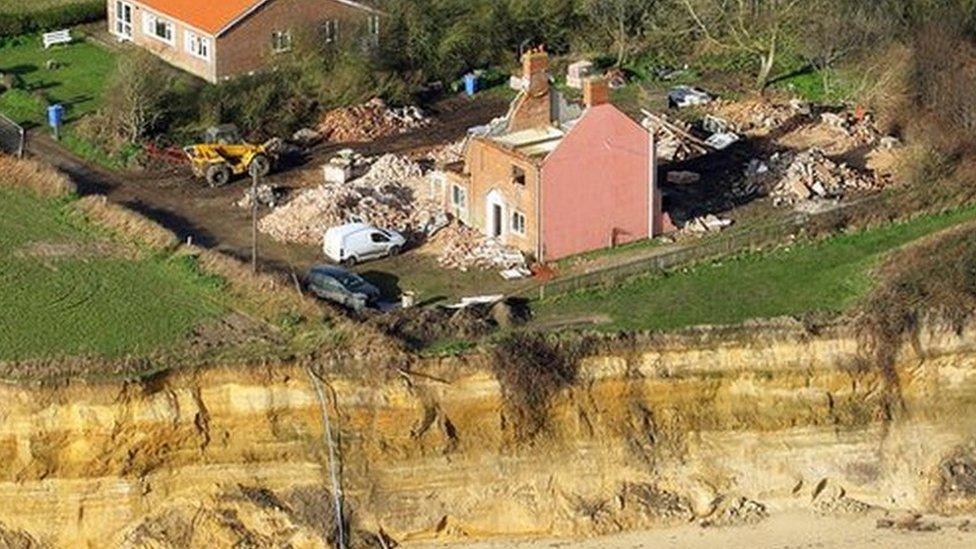Coastal erosion: Climate group warns communities of cost
- Published
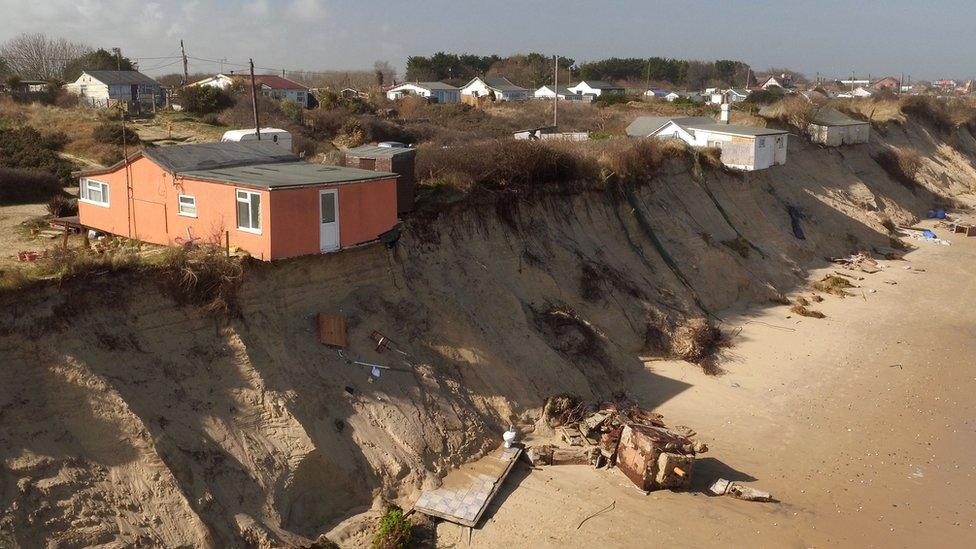
Houses sit on the cliff edge on The Marrams in Hemsby, Norfolk where parts of the cliff collapsed into the sea in 2018.
Coastal homes worth an estimated £584m could be lost to the sea by 2100, a climate action group claimed.
One Home compiled a map identifying 21 at-risk villages and hamlets stretching the length and breadth of England.
It warned people living in coastal areas that protection and compensation may not be available at all.
"We urgently need to help seaside communities prepare for the damage that will come," One Home chief executive Angela Terry said.
The group said 2,218 properties were vulnerable at locations on its interactive map - from Cornwall, along the south and east coast, and in Cumbria, external.
It used data from the Environment Agency's National Coastal Erosion Risk Mapping, external (NCERM) dataset.
Policies on whether to defend, retreat or abandon sections of coast were contained in shoreline management plans (SMPs), but although readily available to view, SMPs were not a guarantee of support, the One Home said.
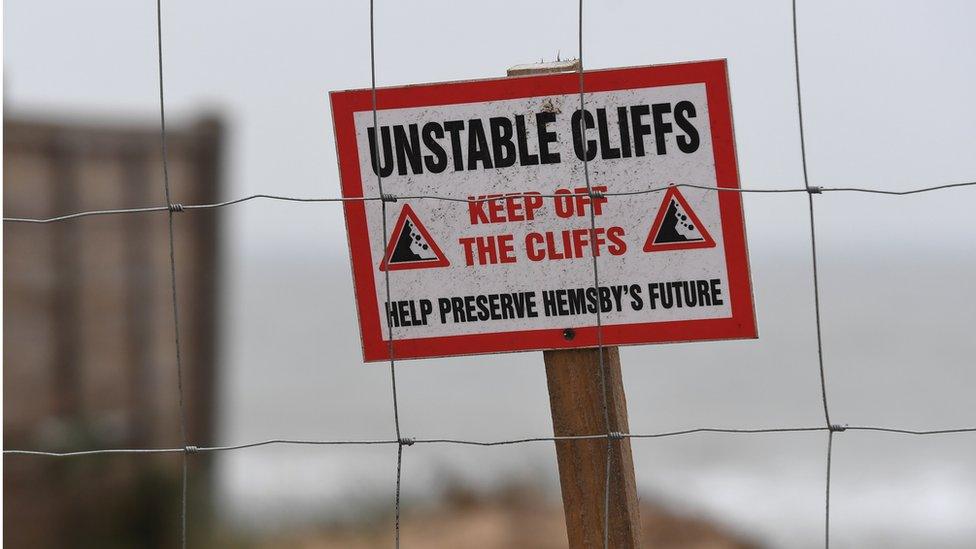
One Home says many coastal residents may be unaware of the decisions being made around their property
Ian Brennan, of Save Hemsby Coastline, revealed the prospect of storm damage was taking "a huge toll on the mental health" of local people.
He said more than 90 homes in the Norfolk village could be lost in the next 25 years if nothing was done.
'Irreversible changes'
Ms Terry said: "Sea levels are rising as global temperatures soar and so larger waves batter our coast during severe storms.
"These irreversible changes mean some cliff faces are crumbling fast.
"We can't turn the tide or build a wall around the entire coast so we urgently need to help seaside communities to prepare for the damage that will come.
"Shoreline management plans are publicly available documents but most people are unaware of their existence."

One Home's map showed which 21 communities in England were most at risk of erosion
She said the map would explain SMPs in an "easy-to-digest way" as homeowners might be unaware their property was at risk or whether decisions were being made about them.
"Even where communities have been chosen to be saved, the money might not be there, giving people false hope that their home will be protected long term," she said.
"Owners might be asked to pay to demolish their homes while still paying their mortgage."
More than a third of England's coastline has a designation of "no active intervention", One Home said, meaning that nothing more would be done to defend against erosion.
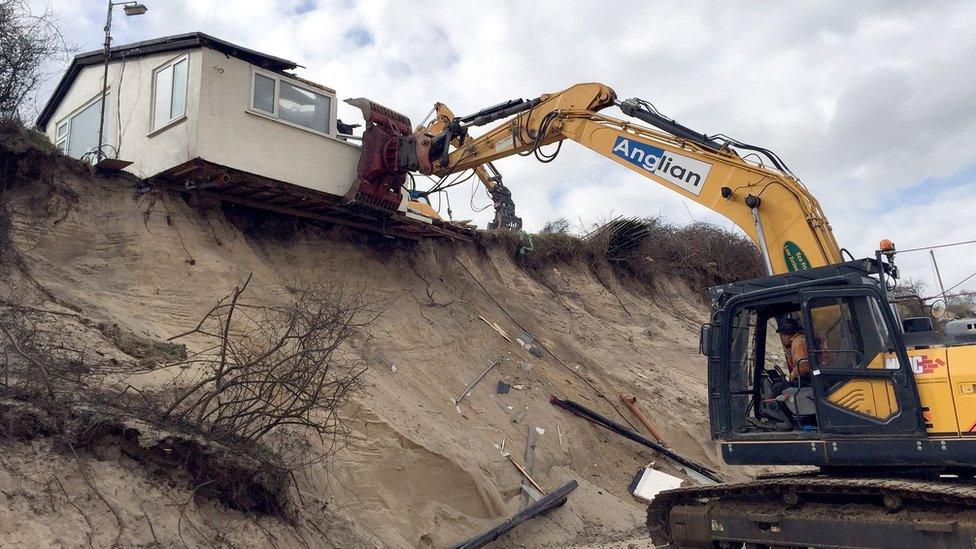
Homes along the Marrams, in Hemsby, Norfolk, had to be demolished in 2018 after a storm surge
An Environment Agency spokesman said: "We know the devastating impact that flooding and coastal change can have, which is why improving the resilience of people and communities is our top priority.
"From 2015 to 2021, we invested £1.2bn to better protect around 200,000 homes from coastal erosion and sea flooding.
"However, climate change means that our coast is changing at an accelerated rate, meaning in some places we and coastal authorities will need to help local communities adapt and transition away from the current coastline."
The 21 communities at risk were:
Chuck Bank, Northumberland
Wilsthorpe to Atwick, East Riding of Yorkshire
Rolston to Waxholme, East Riding of Yorkshire
Hollym to Dimlington Cliffs, East Riding of Yorkshire
Easington to Kilnsea, East Riding of Yorkshire
Overstrand, Norfolk
Trimingham, Norfolk
Mundesley, Norfolk
Bacton and Walcott, Norfolk
Happisburgh, Norfolk
Hemsby, Norfolk
Point Clear, nr Brightlingsea, Essex
Minster Slopes to Warden Point, Isle of Sheppey, Kent
Fairlight Cove and Cliff End, East Sussex
Colwell Bay, Isle of Wight
Binstead and Quarr, Isle of Wight
Thorness Bay, Isle of Wight
Durlston Bay, Dorset
Downderry, Cornwall
Marazion East and Perranuthnoe, Cornwall
Coulderton and Nethertown, Cumbria

Find BBC News: East of England on Facebook, external, Instagram, external and Twitter, external. If you have a story suggestion email eastofenglandnews@bbc.co.uk, external
- Published31 January 2023
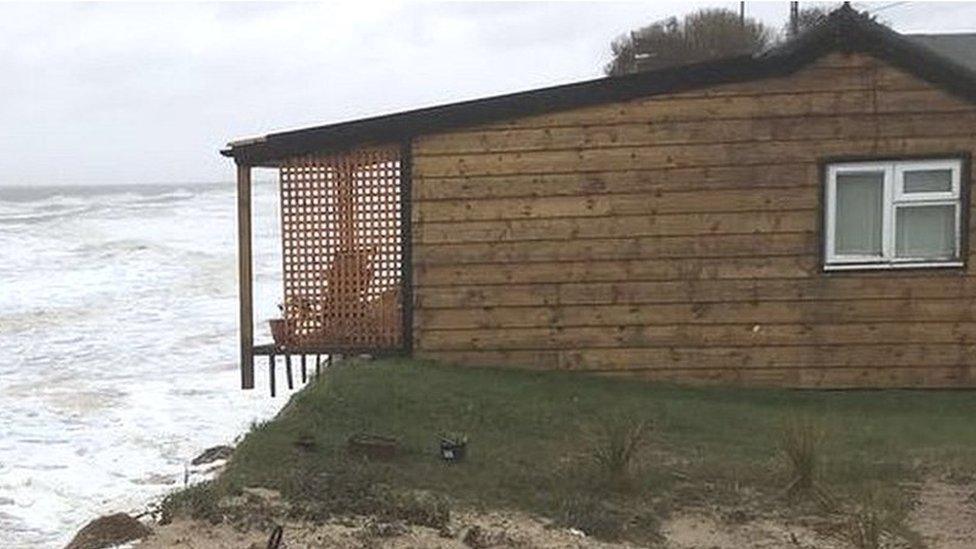
- Published31 December 2022
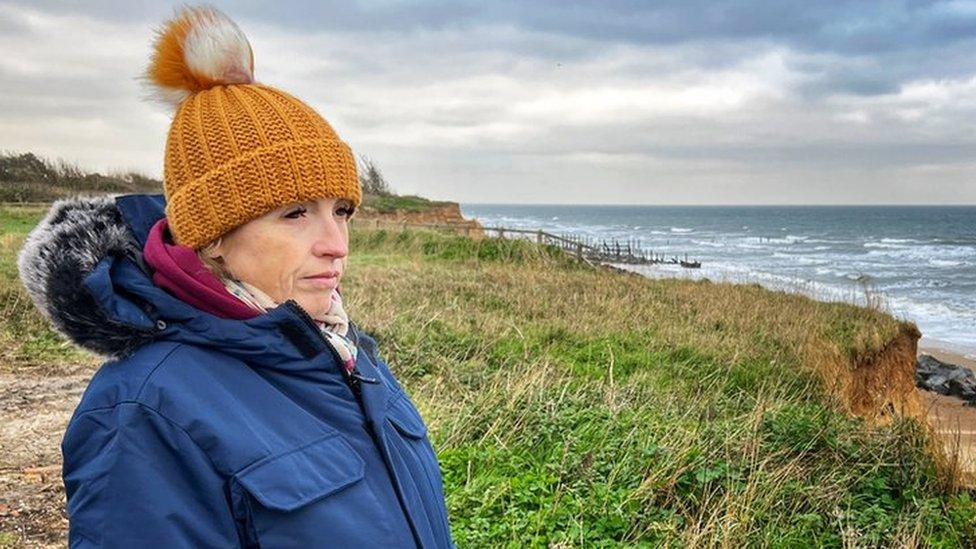
- Published27 February 2020
